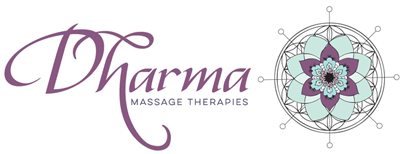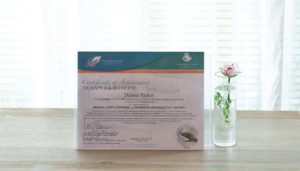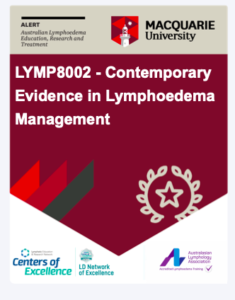Manual Lymphatic Drainage & Lymphoedema
Manual lymphatic drainage is a very gentle technique used specifically to assist the efficiency of the lymphatic transport. It is not a massage, rather it is a method to “exercise” the lymphatic system focusing on effecting fluid instead of muscle. The techniques involve stretching the skin to activate the lymphatic system’s stretch response reflex that increases fluid uptake from the tissues.
The Dr Vodder technique stands apart from other lymphatic massage modalities as it is designed to cause a prolonged systemic response. It requires a series of sessions to treat inflammation (post surgery swelling, sprains etc) and immune function disorders.
I am an accredited member of the ALA (Australian Lymphology Association) and the NLPR (National Lymphoedema Practitioners Network).
APPLICATIONS FOR MLD
Today MLD is used in the aid of clearing congestion ie sinusitis, promoting scar healing, relieving post operative swelling, boosting immune function and deep relaxation. It is important to remember that general MLD is designed to enhance a functional lymphatic system. If you have lymphoedema your lymphatic system is compromised and requires specialised treatment from a therapist trained in lymphoedema, not just MLD.
Manual Lymphatic Drainage techniques were first developed in France in 1932 by Emil and Estrid Vodder, in 1964 Drs John and Judith Casley-Smith were able to use new knowledge of the lymphatic system to build on the Vodder’s work. These pioneers sought to assist patients in hospitals suffering from acute lymphoedema. Lymphoedema can be a genetic ailment or can arise from trauma to the lymphatic system such as surgery or radiation. In Europe this treatment is covered by the healthcare system, as yet not so in Australia. The remarkable scientific achievements in recent years means that lymphatic research and understanding is constantly evolving. This is why my studies from the world’s leading bodies continue in this area.
- 2015 – Lymphoedema Training Academy, Brisbane, Australia
- 2017 – Vodder 1 & 2, Perth
- 2018 – Vodder Complete Decongestive Therapy, Aukland, New Zealand
- 2019 – Vodder Technique Review, Walschee, Austria
- 2020 – Kick Pink Breast Cancer Rehabilitation, Susannah Haarmann online, USA
- 2021 – Contemporary Evidence for Advanced Lymphoedema Practitioners, Macquarie University
Lymphoedema is not currently itemised with Medicare, neither is remedial massage. I strongly recommend that everybody has a multidisciplinary team to support them, whatever the condition. A Care Plan from your GP incorporating a physiotherapist or occupational therapist may be of benefit to you. Locally I can suggest Janet Brockman, physiotherapist or Jeannie Davis, occupational therapist, both lymphoedema trained.
Complete Decongestive Therapy (Treatment for chronic lymphoedema).
“ Up to 25% of breast cancer patients whose surgery includes removal of lymph nodes in the area of the armpit eventually develop lymphoedema.” www.vodderschool.com/manual lymph drainage overview
Complete Decongestive Therapy is considered the “gold star” treatment internationally for lymphoedema. This combines compression bandaging along with manual lymphatic drainage, exercise and self care. Lymphoedema is a medical condition that is not curable but definitely treatable with correct sustained management. If found and treated early it is very manageable.
Compression bandaging is used in conjunction with Manual Lymphatic Drainage to reduce the volume of the limb during an acute phase and bring lymphoedema to a manageable level. Short stretch compression bandages have a high “working pressure” which means your muscle contraction and relaxation works against the resistance of the bandage. This has a number of advantages including improving the efficiency of your intrinsic muscle pumps, assisting break down of hardening proteins, preventing back flow of lymph and reducing the ultrafiltrate from the arteriol capillaries.
To paraphrase Foldi “Fluid cannot be compressed……..by contrast fluids can move into vessels and escape”. Hence we use compression bandages to increase the tissue pressure so the excess fluid is encouraged to escape via the lymphatic pathways.
The initial “intensive” phase may require 2 weeks of treatment. The goal of this phase is to reduce the visible swelling of the limb (decongest) until the volume plateaus, only then should a custom garment be ordered and the “maintenance” phase begins.
After the initial sessions you will know how to self care through self-MLD, self bandaging, diet and exercise advice. My hope is that you will regain your independence and daily activities that may have been hampered by lymphoedema as well as prevent the limb from enlarging or hardening further. CDT is neither cheap nor convenient, it requires commitment from both therapist and client. It is the most proven effective treatment for lymphoedema.
Lymphatic taping is a less inconvenient and cheaper alternative that can greatly enhance your lypmphatic function when combined with therapy sessions and wearing your compression garment.
Please call me to discuss your particular concerns and needs. A treatment plan can be devised that will best accommodate your needs and circumstances. When seeking a MLD therapist it is important to understand your condition and the qualifications of your therapist. Clinical MLD therapists in Australia will usually be trained in either the Vodder method or the Casley-Smith method or through the ALERT program at Macquarie University. The Foldi method is popular in Germany.
I touched on MLD early in my studies at TAFE with a short course using Casley-Smith techniques. In 2015 I completed my Lymphoedema Management training with the Lymphoedema Academy of Australia in Brisbane. In 2018 I achieved internationally recognised Vodder Therapy1, 2 and 3 for Complete Decongestive Therapy and Manual Lymphatic Drainage for lymphoedema. In 2019 I was fortunate to visit the Vodder Academy in Austria and have my techniques reviewed, in 2020 and 2021 my studies have continued online, most recently with Macquarie University.
I am an accredited member of the ALA (Australian Lymphology Association) and the NLPR (National Lymphoedema Practitioners Network).
WHAT IS THE LYMPHATIC SYSTEM?
The Lymphatic system is a secondary circulatory system, however as lymph is a clear fluid it is widely unthought of by the majority of people, until something goes wrong. Little research was done on this system until recently but the imaging and technology available over the last 10 years has meant an exponential growth in knowledge of this system and it’s workings.
The lymphatic system is vital to our homeostasis as it regulates the fluids in our bodies as well as our immunity.
Most people would be familiar with some of our larger lymph nodes such as the tonsils, or the submandibular nodes that swell under your jaw when you are coming down with a virus. However most of the superficial (just under the skin) elements that we will deal with are delicate and tiny in size but significant in function.
Lymph Nodes produce the lymphocytes and store our armies of warrior cells and cleaner cells. The nodes receive chemical messages from our surveillance cells then modulate our immune response to infection appropriately. This is incredibly important work.
There is a broad range in the number of lymph nodes scattered throughout our bodies, somewhere between 600- 1000 depending on the individual. The structure of the lymph node allows more fluid in than out, giving time for filtration to occur and break down of pathogens to take place. Examples of pathogens in our system can include dust, dyes, bacteria, viruses, mutant cells, fats and metabolic waste.
The lymphatic system has no major pump and therefore movement is essential to the flow of fluid. This is why you may notice swelling if you have been on a long flight or seated for long periods, resulting in fluid, proteins and toxins being stored in the tissues. Changes in tissue pressure activate the delicate initial lymphatic vessel to uptake fluid from the tissues. The tiny Lymphangion – is the functional unit of the pathway. It is responsible for propelling the lymph along the lymphatic vessels.
When proteins are stagnant in the extracellular tissue fluid they attract more fluid and an inflammation cycle is produced. This can include leakage from weak veins that accumulates in the tissues. The vascular circulation and lymphatic circulation effect each other. The Dr Vodder method of MLD disrupts this inflammation/pain cycle allowing the body to enhance it’s own healing capacity.



